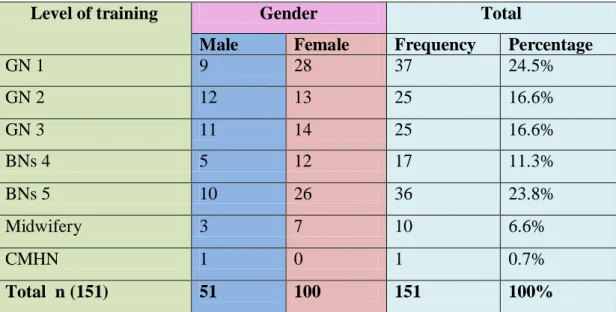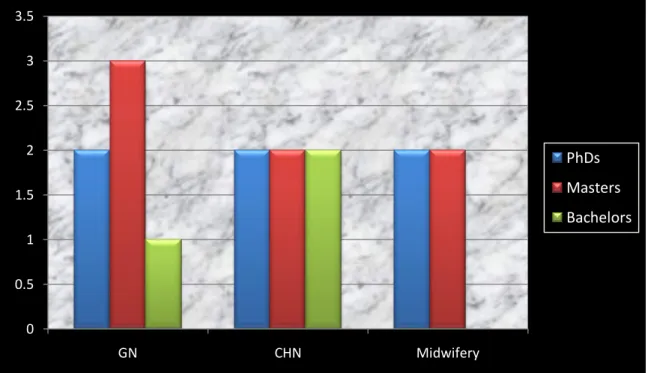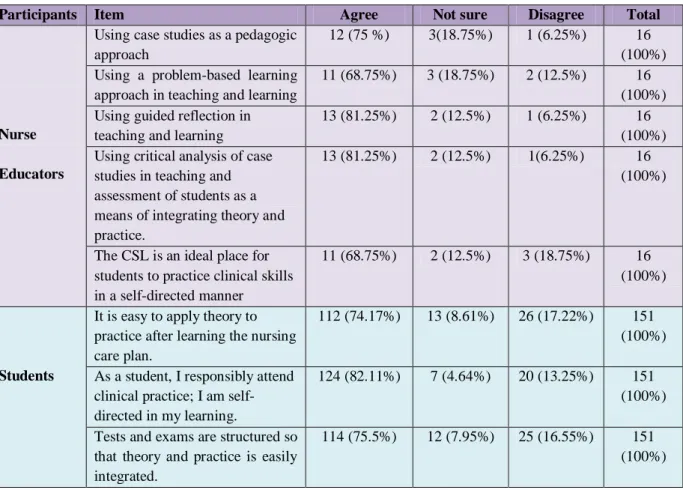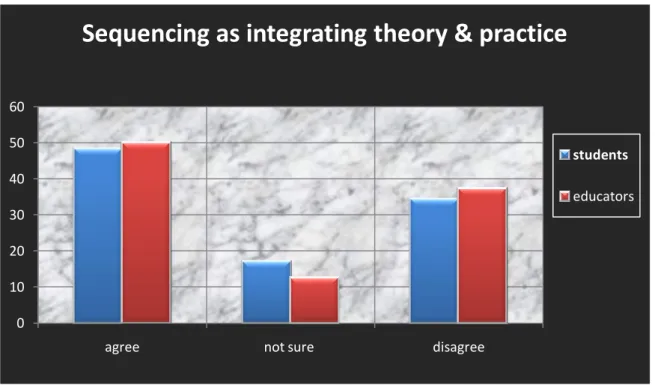Findings: The results of this study revealed the existence of the gap between theory and practice in nursing education in Swaziland. From the study it emerged that pedagogical approaches to problem solving are essential in the integration of theory and practice.
Background
Study Context
What is the nurse educators' understanding of the concept of theory-practice integration in nursing education in the country?. The results of the study revealed that the participants believed that a gap existed between theory and practice in nursing education in the country. Clinical nursing education was seen as an essential component in the integration of theory and practice in nursing education.
Staff shortages, especially in the clinical environment, have been reported to hinder the integration of theory and practice. I am unsure about my role as a teacher in the integration of theory and practice.
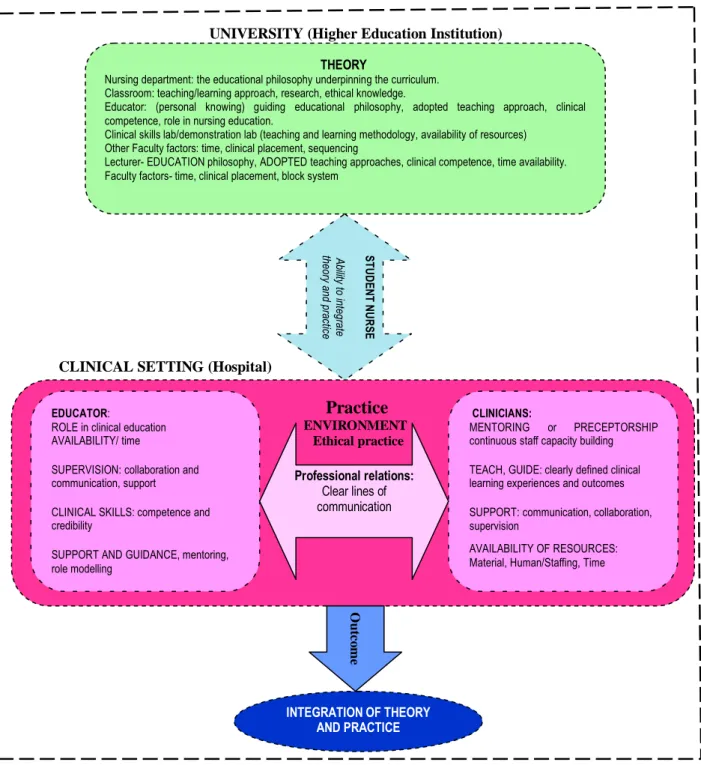
Problem Statement
Research Purpose
Research Objectives
Research Questions
Significance of the Study
Conceptual framework
Operational Definition of Terms…
Conclusion
Dissertation Outline
Introduction
The key terms and phrases used for the search were "theory-practice gap", "bridging the theory-practice gap", "integration of theory and practice", "nursing education", "perceptions of nurse teachers and nursing students". The discussion will be on the following subtopics: nursing theory, nursing practice, the existence of the gap, barriers to the integration of theory and practice, ways of integrating theory and practice, and finally, the conclusion.
Nursing Theory
Page suggests that the power of empirical knowledge is reduced to its proper place of informing aesthetics (practice) can come through reflection and always interpretation within the context of that particular situation in the process of integration with personal knowledge. Empirical design refers to the science of nursing and is concerned with objective, abstract, and general knowledge that can be quantified and verified through repeated testing over time and is intended to inform aesthetics (art and/or practice) (Johns, 1995).
Nursing Practice
Part two of the questionnaire examined nurse educators' perceptions of the integration of theory and practice. The results of this study indicated that clinical nursing education was viewed as an essential component in the integration of theory and practice in nursing education. The study was unable to capture the perceptions of physicians with whom the students practice in the clinical setting about the integration of theory and practice in nursing education.
In order to integrate theory and practice, some of the education must take place in the clinical setting. What do you think are the barriers to integrating theory and practice in nursing education?

Theory and Practice gap: Does it exist?
Ways of Integrating Theory and Practice
- Problem-based Learning
- Competency-based Learning
- Clinical Skills Laboratory
- Clinical Supervision
- Professional Relations and Communication
- Evidence-based Practice
Barriers to the Integration of Theory and Practice
- An Educational Philosophy as a Guide…
- University-based Nursing Education
- Nurse Educator‟s Role
- Clinical Nursing Education: Who is Responsible?
- Curricula Issues
As a result, it is suggested that nurse educators need to redefine their roles, focus on what they are experts in and leave some areas of the curriculum to be taught by those with the clinical expertise to do so (Corlett et al., 2003 ) ). McCaugherty (1991) attributed the reasons for the gap to the disparities between theory and practice themselves.
Conclusion
Page | 41 signs that students with traditional teaching and learning methods learn to transfer or retain some knowledge that they cannot use (Biley & Smith, 1998). Ferguson and Jinks (1994) suggest using a process model that emphasizes education as a developmental process that prepares students for lifelong learning. 1999) argue that a paradigm shift to integrate new roles with learners while reducing the behavioral forces of traditionalists is a priority for nurse educators seeking to make the most of the holistic teaching and learning process.
Introduction
Research Paradigm and Approach
Nurse educators were asked if they believed that the gap between theory and practice existed in nursing in the country. Nurse educators believed that they had a role to play in facilitating the integration of theory and practice in nursing education in the country through collaboration with the student and the clinicians. The results revealed that 37.5% of participants reported being unsure about their role as clinical educators in the integration of theory and practice.
In this study, it was found that the unavailability of both material and human resources at the university and in the clinical setting constituted an obstacle to the integration of theory and practice in nursing education. I use problems or short scenarios to facilitate the integration of theory and practice in nursing education.
Study Design
Study Setting
The study was conducted at the University of Swaziland, Faculty of Health Sciences (FHS) in Mbabane. Within the Nursing Department there are three departments, General Nursing and Community Health Care and the Midwifery Departments.
Population
Sampling and Sample Size…
Data Collection
- Data Collection Process…
- Data Collection Instrument
The second part of the questionnaire consisted of items that sought the students' perceptions of theory and practice integration in nursing education. Items in this section included the students' perception of the ways in which theory and practice integration was facilitated, as well as the obstacles to this integration.
Validity and Reliability
- Validity of the Data Collecting Tool
- Reliability of the Instrument
The third section consisted of open-ended questions that sought descriptions or suggestions of what they felt they could do as students and faculty in integrating theory and practice in nursing education. According to Burns and Grove (2009), a newly developed psychosocial instrument with 0.7 is considered acceptable as the researcher refines the instrument to achieve reliability ≥ 0.8.
Data Analysis
The eight subjects who participated in the test-retest did not participate in the main study. Page | 52 perceptions of students and nurse educators, students who had work experience and those who had never worked, and those who had trained as nursing assistants and those who had not.
Ethical Considerations
Qualitative data from the open-ended questions were analyzed by identifying and grouping common themes from the data.
Data Management
Dissemination of Findings
Conclusion
Introduction
Weak support structures for students, while in the clinical setting, emerged as a barrier to their learning, and in the integration of theory and practice. A further study could examine the educational processes used to integrate theory and practice in nursing in the country.
Sample Realization
- Total Sample
- Demographic Data
Findings on Theory and Practice Integration
- Students‟ Perceptions of the Ways in which Theory and Practice Integration is
- Nurse Educators‟ Understanding of Theory and Practice Integration
- Nurse Educators‟ Perceptions of the Theory and Practice Gap
It was determined that all nurse educators who participated in the study saw clinical nursing education as an essential component in the integration of theory and practice in nursing education. The participants came up with several suggestions on how to build a bridge between theory and practice at the university.
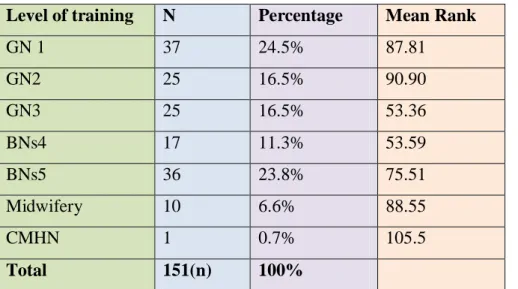
Ways of Facilitating Theory and Practice Integration
- Pedagogic Approaches
- Clinical Nursing .Education
- Open Lines of Communication
Barriers to the Integration of Theory and Practice
- Resource Availability
- Clinical Supervision and Support
- Curriculum Issues
- Sequencing of Theory and Clinical Practice Sessions
From the open questions, 68.75% (n=11) mentioned this factor as an obstacle to the integration of theory and practice. Page | 68 Figure 4.4: Students' view on resource unavailability as a barrier to the integration of theory and practice.
Barriers
- Lack of Resources
- Poor Collaboration between HEI and the Practice Settings
- Pedagogic Factors
- Teaching Philosophy
The most common theme based on the responses was the lack of resources and equipment for practice in the clinical environment and the university's clinical skills or demonstration laboratory. Responses captured from the data ranged from poor relationships, lack of communication between faculty and clinical staff to lack of support for the students.
Participants‟ Suggestions as to How to Improve Theory and Practice Integration
- Training Hospital
- Improve Communication between Nurse Educators and the Clinical Staff…
- Teaching and Learning Process
Improving communication between the faculty and the clinical staff in the clinical settings emerged as an important factor for improving the bridging of the theory-practice gap in nursing education. This included offering support to students, and appointing preceptors who could work closely with the students while they were in the clinical setting.
Conclusion
Participants felt that the lack of resources in the office and in the clinical and demonstration laboratory was a major factor that hindered the integration of theory and practice in nursing education in Swaziland. The results of this study show that students and nurse educators believe there is a gap between theory (what is taught in the classroom) and practice (actual clinical practice in practice). they know how to connect theory and practice.
Discussions
Theory and Practice Integration in Nursing Education
Perceptions on Theory and Practice Integration
Ways of Integrating Theory and Practice
- Pedagogic Factors…
- Clinical Nursing Education
This is consistent with Williams and Taylor (2008) who in their study of nurse educators' perceptions and experiences of entering clinical practice found that participants were uncertain about their role in the integration of theory and practice in clinical nurse education . Unlike Carson and Carnwell (2007) who examined the role of teacher practice in integrating theory and practice, participants in their study were aware of their role in bridging theory and practice.
Barriers to the Integration of Theory and Practice
- Unavailability of Resources
- Imbalances between Theory and Practice
- Lack of Support and Supervision
- Poor Communication and Relations…
- Curricular Issues
- Teaching Philosophy
In accordance with the results of this study, several researchers (Severrinson, 2009; Butterworth, Bell, Jackson & . Pajnkinar, 2008) found that clinical supervision is essential in the integration of theory and practice in nursing education. I can practice in the clinical setting as I would have learned in the classroom or skills lab. Clinical assessments/exams conducted in the practice setting on real patients serve to integrate theory and practice.
Participants‟ Suggestions
Limitations of the Study
Their views on how to integrate theory and practice are valuable in nursing education because they can provide the practical aspect of nursing practice. The study cannot be generalized to the entire country because it was conducted in only one nursing educational institution.
Conclusion
Several factors thought to contribute to the disparity between theory and practice, including limited resources, human and material, in the clinical or demonstration skills laboratory and to a greater extent in clinical settings were identified by both students and by nurse educators as barriers to the integration of theory and practice in nursing education. Nurse educators were aware of their role in clinical teaching, however some were unsure of their role in integrating theory and practice related to clinical teaching.
Recommendations
- Education
- Future Research
No one is instructing us about how we can apply what we have learned in the classroom to actual practice in the clinical field. The results of the clinical practice are also explained to the clinical staff so that they know what is expected of us in the clinical setting.
Information sheet
Declaration - informed consent
UKZN - ethical clearance
Application letter for permission to conduct study
UNISWA - permission to conduct research
